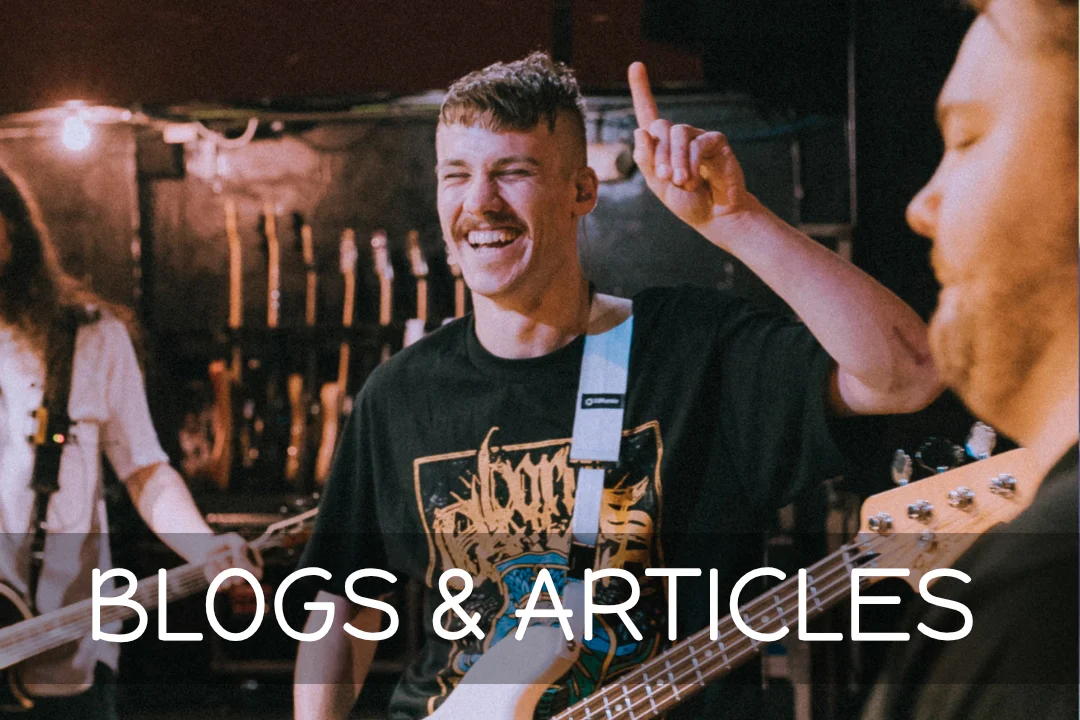We’ve all been there… you’ve been playing guitar for a while and you are searching for the next song to learn and spend hours upon hours sifting through tablature, trying to find the right one. Or you go on YouTube and watch endless videos, trying to find someone who teaches you the song correctly.
There is another way!!! Guitarists get very reliant on tablature. There is nothing wrong with tablature as when you start learning it is a really useful tool for reading music. However you don’t need to waste any more time learning from terrible tablature!
What is Ear Training?
Ear Training is improving your ear as a musician so you quickly identify what note is being played, or chord, or diad, triad etc.
Let's start with intervals; take a look at the following intervals and make sure you listen to each one carefully-
In the key of G (so starting from the note G), we are going to play every possible interval.
Once you have listened to each example above, play through them one at a time and listen to how they sound.
Exercise 1 – G chromatic scale
Exercise 2 – G chromatic scale, playing root then different intervals (down the neck)
Exercise 3 – G chromatic scale, playing DIFFERENT INTERVALS then THE ROOT (up the neck)
There are several different tricks to help you recognise intervals, using song examples that you know. For instance the Jaws theme tune is a minor 2nd, Here Comes The Bride is a perfect 4th and the Star Trek theme tune is a minor 7th.
Whilst this is a fun tool, I feel the best way to improve is to listen a song and try to identify what's going on and attempt to recreate it. Try this with songs you know first if that helps!
John Mayer – I Don’t Need No Doctor
We are going to focus on John Mayer's adaptation of I Don’t Need No Doctor, which is actually a Ray Charles song!
First take a listen to the live version-
So the first thing to identify is the key and the chords. Play along to the song and see what you come up with.
EXERCISE 4 - (SPOILER ALERT) – Chord progression
There are actually some interesting chords in this song, but the chord progression basically resolves around the key of E major, with the main progression (you may have been hearing) going between the chords Em, G and A.
First here are the chord shapes used:
Next we have the chord progression:
How did you get on? Don't worry if you could only figure out the root notes of each chord, that is still an achievement to get you started with ear training!
Now you know the chord progression, the next challenge is to do something that might feel weird. We are going to have a go at working out the trumpet solo! The trumpet solo starts at 1:48 (skip ahead in the video below). Have a listen and see what you can hear:
EXERCISE 5 - (SPOLER ALERT) - First note of each bar
Hopefully you have had a go now at figuring out some of the licks of the trumpet solo. Below is the first note of each bar, use this to help if you need!
EXERCISE 6- IDENTIFY THE SCALE (E minor PENTATONIC)
Another tip in helping you to identfy what notes are being played is to figure out what scale is being used. After playing along for a little while I started to realise that this solo features all the notes from the E minor pentatonic scale. Here it is below:
EXERCISE 7 - (SPOLER ALERT) - EVERY 2 BARS NOTATED
Okay here is some extra help if needed! I have notated every two bars of the trumpet solo, take a listen and try and figure out the gaps.
EXERCISE 8 - THE WHOLE THING!
Well done for getting this far! Hopefully you have figured the whole solo out, or if you have only managed a few bars that is still great! It is all about stepping out of your comfort zone and pushing yourself to not rely on tab. Here we go, here is the whole trumpet solo:
HOW DID YOU GET ON?
It is a difficult thing to do, if you have never tried to figure something out by ear before. Here are some tips-
Work out the chords.
Find the key.
Figure out what scale to use.
Decide where you want to play it on the neck.
Start by figuring out a few of the licks.
Keep on building and be persistant (don't cheat!)
Slow it down if necessary - there are lots of apps available that slow down songs (this might help you).
Practice, practice, practice.
Well done for giving ear training a go! Don't be disheartened if you found it difficult, or you only managed a few licks. It took me a long time to develop these skills, but I assure you if you put in the effort the results will amaze you. You will no longer rely on tablature or YouTube videos! Thanks for watching!
If you are looking for lessons in guitar, Newbridge House of Music offer one-to-one lessons in guitar, bass, piano, vocals, ukulele, songwriting and music theory. Book your first free lesson now and start your musical journey with us!
We have released our first book!
This book teaches you every chord you will ever need in all five CAGED shapes, allowing you to master the fretboard and helping you to develop and expand your chord knowledge whilst keeping it fun and easy to grasp. Get the book and take your chord playing to new heights. 'Every Chord Shape You Will Ever Need' is ideal for guitarists trying to get to the next level and who like to play, perform and write music.







